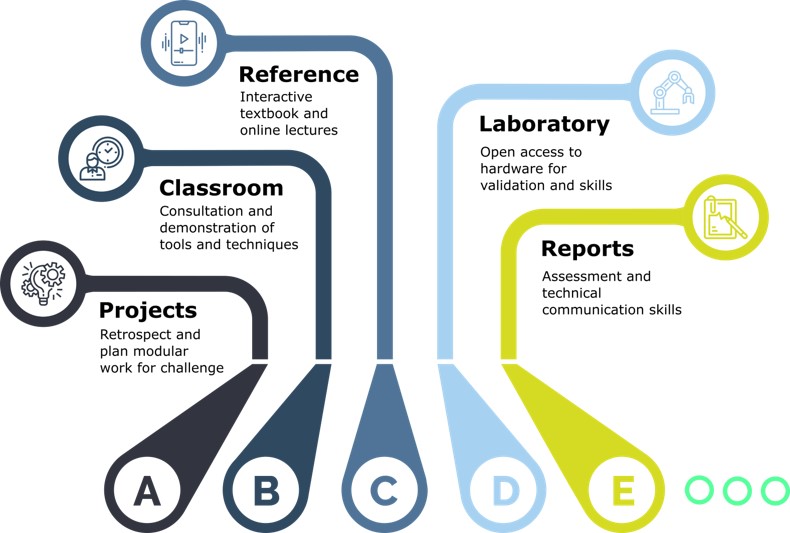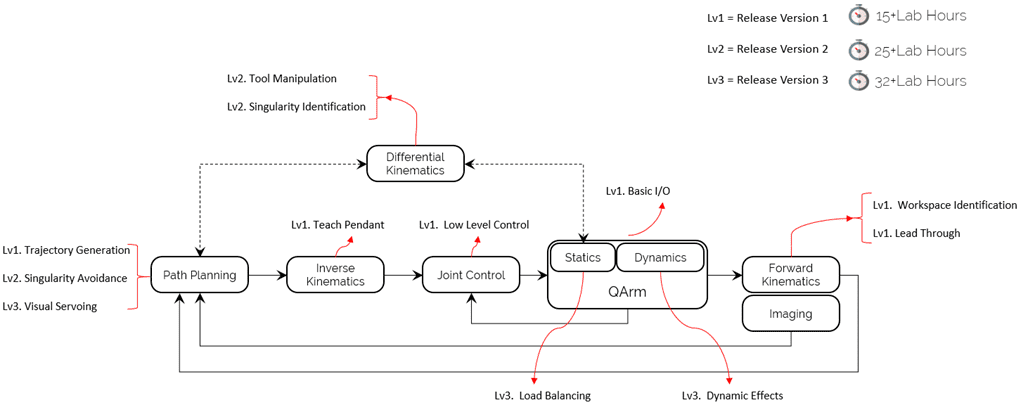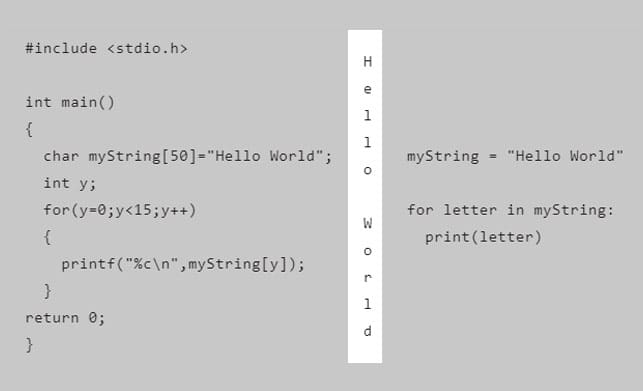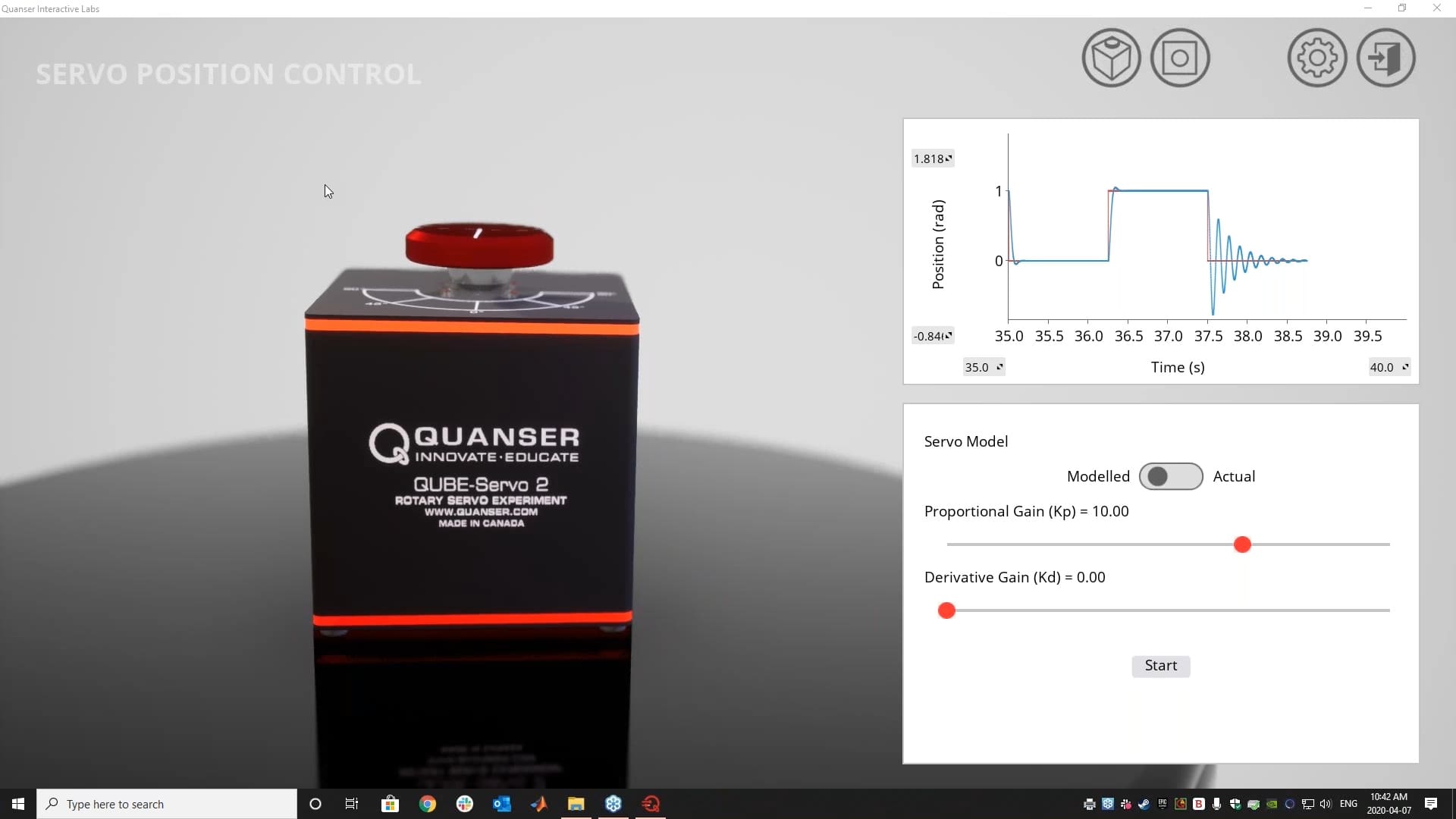
Modernizing engineering education is hard. A big part of the problem is that engineering is a combination of the exciting and sexy world of self-driving cars and landing rockets, and the reality of years of mathematics and intensive software engineering that lives behind the scenes. In the words of the renowned bodybuilder Ronnie Coleman:
Everybody wants to be a bodybuilder, but don’t nobody wanna lift no [heavy] weight
For that reason, engineering students are drawn to the field for the same range of reasons, from the theoretical to the practical. We as educators must somehow not only appeal to all but engage and motivate students to invest their time and energy into learning the theory and practical applications with the promise that their investment will pay off. The payoff is huge, but especially in control systems, there are a lot of theoretical concepts and mathematics to lift.
Solutions from Engineering Education
In order to address these issues, there are a slew of techniques that have emerged over the past few decades that aim to make engineering courses more interesting and engaging for students, without losing the theoretical core that lives at the heart of these topics. Some aim to give students more opportunities to gain hands-on experience, including problem/project-based learning (PBL), and experiential learning. Some offer students more flexibility over when and how they consume the content of a course to try to make it easier to grasp the theory behind a course, including flipped classrooms and self-directed learning. Finally, bringing technology to the party to make content more exciting has been a go-to method for years with online and mobile content bringing about “blended” and massive open online courses (MOOCs).
With more and more universities investing in research departments dedicated to engineering education, a fair amount has been published on these topics highlighting the advantages and noting the problems. I attended a special session at the annual American Society for Engineering Education (ASEE) conference last year, where a professor admitted during his presentation that his attempt at a flipped classroom had been a complete disaster. The experience for students can be rough without buy-in from all levels of the academic administration, and the proper tools and resources needed to support students in a new course configuration.
Quanser has always stated that our main competition as a company are DIY instructors that have the creativity, knowledge, and resources to create experimental platforms for a fraction of the cost of a Quanser product. Our advantage has always been that in most cases, our quality, reliability, maintenance and support, and curriculum are difficult to beat without a significant investment. That being said, in the general case of engineering education, where professors are almost always called upon to DIY new and exciting ways to teach their courses, what can we offer as a company that will take away the pain points and offer reliability and consistency for years to come?
What’s the Ultimate Controls Experience?
Our first solution to this problem was Experience Controls. We believe that creating a modern and innovative engineering course is difficult without a new approach to the textbook. Given that the textbook is at the core of the way concepts and assessments are done in a traditional course, it’s fruitless to try to adapt around a resource that has so little to offer students in terms of experience and skills. From our efforts around creating Experience Controls, the next obvious question that we received from our partners and team was what we would recommend as an ideal control systems course structure? Blue sky, what is the best controls course that we can think of for modern students?
My first instinct was to look at courses that I’d been a part of in the past. I took six controls courses when I was a student, and all of them had things to offer that I thought would be beneficial to students. The main inspiration that I took, however, was from the graduate-level Modern Control Methodology course that our founder Jacob Apkarian and I taught for several years at the University of Toronto. When we started the course, we had the same question of how to structure our ideal control systems course, but with the added stress of having to actually implement the course for real students. This time around, I used the general structure that we refined for our course at UofT, combined with some more modern approaches from engineering ed and Experience Controls to create a framework that I believe represents the best elements of modern pedagogy.
Studio Classrooms
The overarching theme of the concept we have created is that especially for the engineering fields that are primarily responsible for R&D: control systems, mechatronics, and robotics, hands-on engineering education should provide students with an experience that mirrors the responsibilities and roles that they would play as a practicing engineer. In other words, leverage the coop-style success that has been documented at institutions like the University of Waterloo to bring real engineering experiences to the classroom. This concept, once we had talked through some of the activities that students would be responsible for, started to resemble the traditional studio course that is a cornerstone of the arts.

Studio classrooms traditionally focus on project work and experimentation as a means to replace or reduce the need for traditional lectures. The problems that students tackle are important because they must be both motivational, but also because they are used to build the foundation of a portfolio, much like the experiences and examples students are required to present when they apply for engineering jobs. Finally, in a traditional studio, much like an engineering R&D department, responsibility for learning is placed on students. The key guiding principles that we adopted were:
- Lecture content is provided outside of the classroom using videos, podcasts, discussions, etc.
- Laboratory activities are modular skill-building activities that are self-prescribed by students to gain skills they feel they need to solve problems
- Presentations, reports and most course activities vary from student to student
- Projects and challenges are industrially-aligned and follow a sprint-based cycle
Engineering Studios
The length of courses varies from region to region, but assuming a course is generally at least 16 weeks, the general structure of the course consists of three challenges and a final project. At the beginning of each sprint, students retrospect on their past experiences working on challenges and projects and then plan what work will be needed to tackle the next challenge in the sequence. Students research the challenge and various approaches that could be taken and develop prototypes as needed. Each element of the challenge is addressed as a separate element of the whole, and tackled by a student individually, including building up the requisite skills and experience. After two weeks, students write a report on the problems they faced, what they did to solve them, and the results of their individual and team efforts.
Each week students meet with instructors and teaching assistants in a classroom session where they have an opportunity to consult and gain inspiration and direction. Instructors may choose to use part of the consultation session to demonstrate essential techniques, present guest lecturers, or offer walkthroughs of critical software tools and systems. Laboratory sessions primarily are an opportunity for open access to the hardware platforms used for the challenges. Students can implement their prototypes and record results for validation exercises. A variety of modular exercises are also provided for students to follow as needed in the laboratory to gain the hands-on skills needed for the elements of the challenge. These activities are offered as self-guided experiences and are self-evaluated to check understanding.

The majority of the theoretical techniques and concepts are presented using mobile tools like Experience Controls, lecture videos, podcasts, and other resources to give students flexibility in how, what, and when they choose to consume the course content. We believe that the combination of live consultation with experts, rich mobile content resources, podcasts and videos, and hands-on experience in the lab gives students a wealth of ways to approach problems and gain experience. This combination of research, consultation, and hands-on prototyping is exactly the approach students would be expected to take to solve real industrial problems as part of an engineering team at a company like Quanser.
The final group project is based on the scaffolded skills students gain throughout the course. An open invitation is given to students to condense their skills into a creative application, based on industrially-inspired problems. If possible, industrial partners might even inspire various projects based on real R&D challenges faced by their teams. This structure is inherently motivational since it allows students to tackle problems they’re interested in with clear, practical applications and contexts for their skills and experience – they can even put the project on their resume.
Assessment is based on the reports submitted after each sprint to address the challenges, and the final group presentation and report is created as a part of the final project. For example, in a four-month course, three challenges could be offered for 20% each, with a final 40% project component.
The Control Systems Studio
For a control systems course, this approach could look something like this:

The controls topics begin with a fast-track to controls implementation with an introduction to the concept of feedback, types of systems, design steps, and finally, an introduction to PID control. Once students have learned how to qualitatively design a controller, they go back to the beginning and take a more theoretical approach using modelling, classic design, and hardware considerations to design a controller to specifications. Next, they are challenged to use more advanced techniques, including pole placement and lead-lag, to design a controller for an unstable system. The course ends with an open challenge to implement an advanced control scheme using the skills and experiences gained throughout the course. If an industrial partner were available for the project, students would be expected to design based on a formal specification document and present their final design to the stakeholders as well as the class.
“Ain’t nothin’ to it, but to do it”
This course structure does step away from conventional approaches to engineering education, and as such, does require an investment of time from the professors and support staff to guide students throughout the process. Students in the version of the proposed course that we delivered at the University of Toronto were uncomfortable at first, not having clear procedures and templates to follow, but ultimately 100% of students surveyed said they would recommend the course to incoming students. This success resulted in an increase in enrolment year over year, which, at the time, was a critical metric in showing motivation and value, since the course was offered as an optional graduate-level course. These results offer a glimpse into the recognition and reputation bump that could result from taking on an ambitious change in course structure that puts student’s skills and employability first. If students are expected to use their educational experience to gain the skills and experience needed to give them confidence in their future careers, this is a course structure that will deliver the types of students that engineering companies, including Quanser, look for in our incoming new hires. To close with a final word from Ronnie Coleman, “Ain’t nothin’ to it, but to do it.” For Engineering students from all specializations, there’s really nothing to a course that doesn’t offer hands-on experiences, and as educators, that’s all the motivation we need to try something new.



